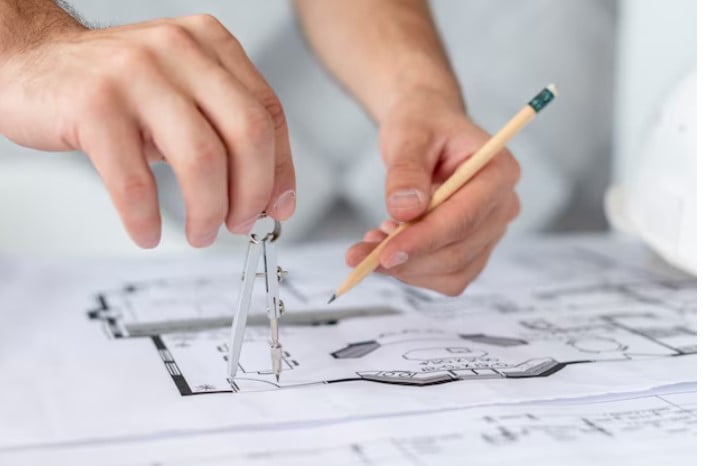In the fast-paced world of innovation and intellectual property, patent illustration plays a crucial role in conveying complex ideas and designs to patent offices and potential investors. With the rapid advancement of digital technology, the process of creating patent illustrations has evolved, offering a wide array of powerful tools and techniques that streamline the design process, enhance accuracy, and improve overall efficiency. In this comprehensive guide, we will delve into the world of patent illustration and explore the various digital tools and techniques that can empower creators to master this essential aspect of the patenting process.
The Evolution of Patent Illustration
Patent illustration has a long history intertwined with the world of innovation and intellectual property. Over the years, it has evolved from hand-drawn sketches to sophisticated digital renderings, reflecting advancements in technology, communication, and the changing demands of patent offices and inventors. This evolution has not only improved the quality of patent applications but has also expedited the patenting process. Let’s take a journey through the stages of this evolution and explore how technology has transformed the way we illustrate inventions for patent submissions.
- Handcrafted Precision: Early Days of Patent Illustration
In the early days of patenting, illustrations were created entirely by hand. Inventors or their hired artists painstakingly drew detailed diagrams and sketches of their inventions. These handcrafted illustrations were often intricate and required a deep understanding of technical drawing principles. Each line was meticulously placed, and shading was added to emphasize key features. However, this method was time-consuming and often led to inconsistencies in quality and style.
- Photography’s Influence: The Advent of Visual Documentation
With the invention of photography in the 19th century, patent illustration took a new turn. Photographs allowed inventors to document their inventions more realistically and accurately. Instead of relying solely on artistic renderings, inventors could now provide photographic evidence of their creations. This approach improved the objectivity of patent applications and enabled patent examiners to better understand the nature of the inventions.
- The Rise of Digital Tools: Streamlining the Process
The late 20th century saw the integration of computers and digital tools into the patent illustration process. Computer-aided design (CAD) software allowed inventors and illustrators to create precise and standardized technical drawings. These digital tools enabled the creation of two-dimensional and three-dimensional representations with greater ease and accuracy. CAD software also introduced features such as dimensioning, scaling, and the ability to create exploded views, enhancing the comprehensibility of patent illustrations.
- Specialized Software for Patent Illustration: Ensuring Compliance
As the demand for accuracy and compliance with patent office guidelines grew, specialized software solutions tailored for patent illustration emerged. These tools, such as Turbo Patent and Patent Optimizer, were designed to meet the specific requirements set by patent offices worldwide. Automatic dimensioning, labeling, and adherence to patent drawing rules became key features, reducing the chances of rejection due to technical errors.
- The Present: Digital Artistry and Collaboration
In the present day, digital tools have reached a level of sophistication that allows patent illustrators to combine technical precision with artistic flair. Vector graphics software, 3D modeling applications, and even virtual reality tools enable patent illustrators to create compelling visual representations of inventions. Real-time collaboration features also facilitate teamwork among inventors, illustrators, and legal professionals, regardless of their geographical locations.
- Anticipating the Future: AI and Beyond
Looking ahead, the future of patent illustration holds exciting possibilities. Artificial intelligence (AI) could play a significant role in automating certain aspects of illustration, such as generating standard views or suggesting dimension annotations. Virtual reality may allow patent examiners and inventors to interact with 3D patent models in immersive environments, enhancing understanding and communication.
Techniques for Effective Patent Illustration
Creating effective patent illustrations requires a combination of technical skills, attention to detail, and an understanding of how to convey complex ideas visually. Whether you’re an inventor seeking to protect your innovation or a patent illustrator aiming to enhance your craft, mastering these techniques can greatly improve the quality and impact of your patent illustrations. In this guide, we’ll delve into key techniques that will help you create clear, accurate, and informative patent illustrations.
- 1. Clear Line Work and Detailing
Clear line work is the foundation of any successful patent illustration. Use clean, precise lines to define the various components of your invention. Maintain consistent line widths to ensure a professional appearance. Pay close attention to detail, as even small inaccuracies can lead to confusion or misinterpretation. For complex inventions, consider using different line styles (solid, dashed, dotted) to differentiate between different parts.
- 2. Exploded Views and Perspectives
To effectively showcase the internal components and functionality of your invention, consider using exploded views. An exploded view disassembles the parts of the invention, showing how they fit together. This technique provides clarity on the relationships between components. Utilize different perspectives (top, front, side) to present a comprehensive understanding of your invention’s form and structure.
- 3. Annotating and Labeling
Accurate annotation and labeling are essential to guide the viewer’s understanding of your patent illustration. Use callout boxes to highlight specific features or parts. Label components with reference numerals and provide corresponding explanations in the description. Ensure that labels are clear, legible, and appropriately positioned.
- 4. Dimensioning and Scaling
Accurate dimensions are critical in patent illustrations, as they convey the size and proportions of the invention. Use dimension lines, extension lines, and arrows to indicate measurements. Include reference numerals and ensure that they match the corresponding labels in the description. Maintain consistent scaling throughout the illustration to ensure accuracy when the illustration is printed or displayed in different sizes.
- 5. Simplification without Sacrificing Clarity
While patent illustrations aim to accurately represent the invention, it’s important to strike a balance between detail and clarity. Overly complex illustrations can overwhelm the viewer and obscure key features. Simplify complex components or intricate details while retaining the essential elements that convey the invention’s uniqueness and functionality.
- 6. Uniformity and Consistency
Maintain a consistent style and level of detail throughout your patent illustrations. This uniformity enhances the professional appearance of your patent application. Choose a coherent color palette, line style, and shading approach. Ensure that similar components are illustrated in the same manner across different views.
- 7. Adhering to Patent Office Guidelines
Different patent offices have specific guidelines regarding the format, layout, and content of patent illustrations. Familiarize yourself with these guidelines to ensure your illustrations meet the required standards. Adhering to these guidelines reduces the likelihood of rejection due to technical errors.
- 8. Iterative Review and Refinement
Creating effective patent illustrations often involves an iterative process of review and refinement. Seek feedback from colleagues, inventors, or patent professionals to identify areas for improvement. Regularly review and revise your illustrations to address any potential issues or inaccuracies.
Conclusion
The world of patent illustration has undergone a remarkable transformation, evolving from handcrafted drawings to sophisticated digital renderings that convey ideas with precision and clarity. As technology has advanced, so too have the techniques that patent illustrators employ to create effective and impactful visuals. In this guide, we’ve explored the journey of patent illustration, from its historical roots to its present state of digital artistry and collaboration. We’ve also delved into the techniques that empower illustrators to create patent illustrations that not only meet legal requirements but also effectively communicate complex ideas.
The evolution of patent illustration mirrors the broader advancement of technology and its impact on intellectual property. From early sketches to photography, computer-aided design (CAD), specialized software, and the integration of artificial intelligence, each phase has contributed to streamlining the patenting process and enhancing the quality of patent applications. The emergence of digital tools has not only increased accuracy but also fostered collaboration among inventors, illustrators, and legal professionals, regardless of their geographical locations.
Effective patent illustration techniques have proven to be a critical aspect of the patenting process. Clear line work, meticulous detailing, strategic use of exploded views and perspectives, accurate annotation and labeling, precise dimensioning, and adherence to patent office guidelines collectively contribute to illustrations that resonate with examiners and reviewers. By simplifying complex concepts without sacrificing clarity and maintaining a consistent style, illustrators can successfully communicate the uniqueness and functionality of an invention.
Read More:
Digital Tools for Patent Illustration: Streamlining the Design Process











Leave A Comment